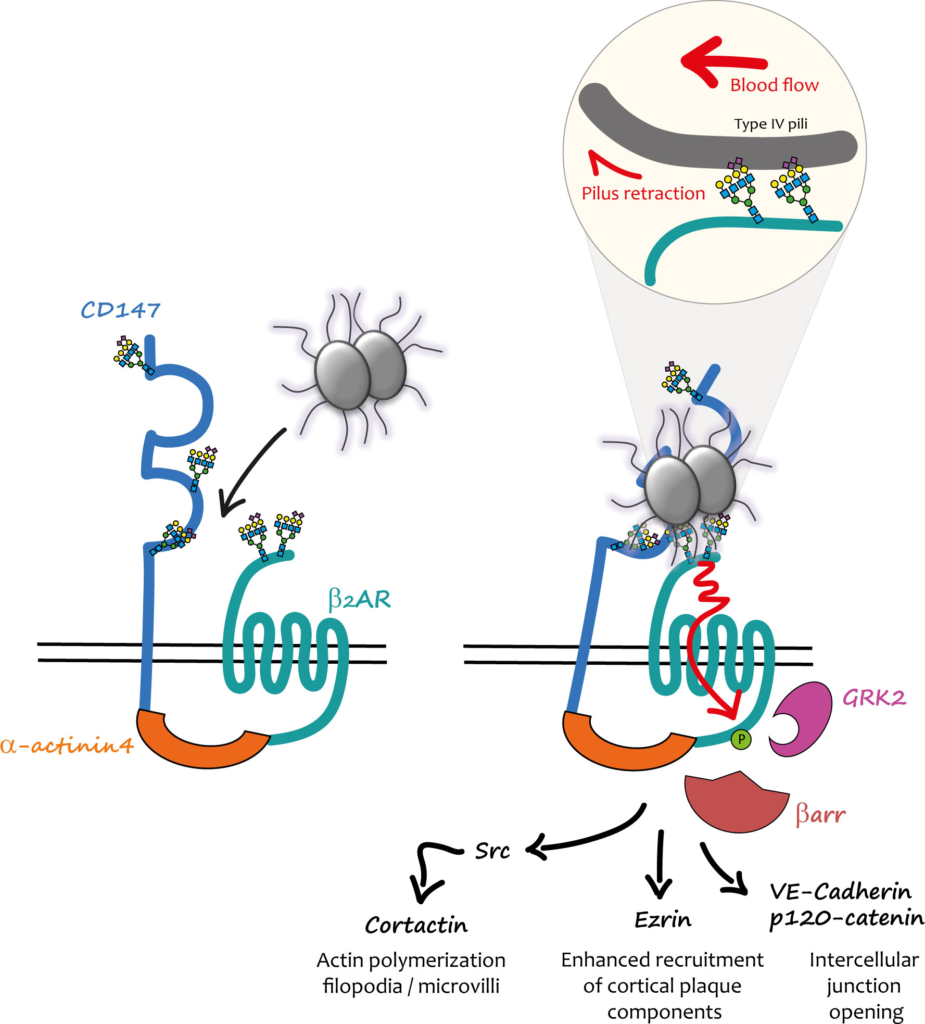02/05/2022 .
Mechanical Activation of the β2-Adrenergic Receptor by Meningococcus: A Historical and Future Perspective Analysis of How a Bacterial Probe Can Reveal Signalling Pathways in Endothelial Cells, and a Unique Mode of Receptor Activation Involving Its N-Terminal Glycan Chains
Stefano Marullo et al Frontiers in Endocrinology

More than 12 years have passed since the seminal observation that meningococcus, a pathogen causing epidemic meningitis in humans, occasionally associated with infectious vasculitis and septic shock, can promote the translocation of β-arrestins to the cell surface beneath bacterial colonies. The cellular receptor used by the pathogen to induce signalling in host cells and allowing it to open endothelial cell junctions and reach meninges was unknown. The involvement of β-arrestins, which are scaffolding proteins regulating G protein coupled receptor signalling and function, incited us to specifically investigate this class of receptors. In this perspective article we will summarize the events leading to the discovery that the β2-adrenergic receptor is the receptor that initiates the signalling cascades induced by meningococcus in host cells. This receptor, however, cannot mediate cell infection on its own. It needs to be pre-associated with an “early” adhesion receptor, CD147, within a hetero-oligomeric complex, stabilized by the cytoskeletal protein α-actinin 4. It then required several years to understand how the pathogen actually activates the signalling receptor. Once bound to the N-terminal glycans of the β2-adrenergic receptor, meningococcus provides a mechanical stimulation that induces the biased activation of β-arrestin-mediated signalling pathways. This activating mechanical stimulus can be reproduced in the absence of any pathogen by applying equivalent forces on receptor glycans. Mechanical activation of the β2-adrenergic receptor might have a physiological role in signalling events promoted in the context of cell-to-cell interaction.
